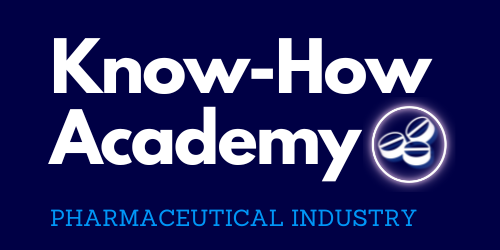Biologics vs. Chemistry
What Every Pharma CEO Should Know
The Strategic Divide Reshaping Drug Development
Pharma Business Newsletter- 1st Issue - Know-How Academy
Good morning, leaders.
As drug pipelines evolve and R&D strategies mature, the pharma industry's future hinges on mastering one critical distinction: small molecule drugs vs. large molecule biologics. Behind the science lies a business imperative—one that can redefine investment, market access, and manufacturing priorities for years to come.
The Molecular Divide: It’s Not Just Science—It’s Strategy
Small molecules are the old guard: tiny, chemically-synthesized, and orally available. Think aspirin or antibiotics—easy to produce, simple to deliver, cost-effective. They remain the backbone of many treatment regimens.
Biologics, however, are the new frontier. Larger, more complex, and produced via living cells, these therapies offer unparalleled precision for autoimmune conditions, cancer, and rare diseases. But they come at a steep cost: high-tech manufacturing, cold-chain logistics, and injectable-only formats.
For executives, this isn’t just a scientific split—it’s a portfolio-defining decision. The choice between small and large molecules affects everything from production timelines and COGS to reimbursement strategies and global scalability.
How Biologics Are Built: Inside the Manufacturing Maze
If small molecules are made in chemistry labs, biologics are built in cell factories. The process looks more like biotech brewing than pharmaceutical compounding:
- Stage 1: Cell Line Development
Identify the gene. Program a living cell. Select the best “producer.” What results is a master cell line stored in frozen vaults, ready to power your entire production pipeline. - Stage 2: Upstream Processing
Grow the cell line in bioreactors. Feed it. Oxygenate it. Monitor it 24/7. You’re not just making medicine—you’re managing a living system. - Stage 3: Downstream Purification
Harvest the proteins. Filter out waste. Repeat until the product is >99.9% pure. Contamination risks are high, and the stakes even higher.
This complexity is why biologics command premium pricing—and why biologics CMOs are in constant demand.
Why It Matters to You
For CEOs and business development leaders, understanding molecule modality is essential to:
- Optimizing your pipeline – Do you have the infrastructure to support biologics?
- Assessing partner fit – Are CDMO capabilities aligned with your strategy?
- Positioning for biosimilars – Are you defending or disrupting?
- Navigating market access – Can payers justify the cost for your large molecule therapy?
This isn’t just science. It’s strategic foresight. As biologics rise in global demand, being molecule-literate could mean the difference between market leadership and margin loss.
What's Next
Expect a sharper focus on biosimilars, biologic patent cliffs, and the next-gen CDMO landscape. We’ll break it all down in upcoming issues.
Subscribe to our Pharma Business Newsletter by Know-How Academy Newsletter to stay ahead of the curve on pharma business trends, strategic shifts, and global drug development dynamics.
